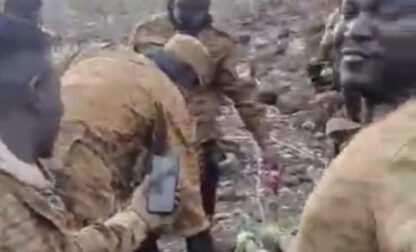Reno correspondent Scott Sonner turned what would’ve been a mundane story into a riveting tale of a family’s longing to have something — anything — to bury of their deceased loved one. Sonner knew telling the story would be no easy task. He had a news release saying a North Dakota man was sentenced in the deaths of two people on the Navajo Nation, the country’s largest Native American reservation, but no names of victims. Most of the hundreds of pages of federal court documents in two cases were sealed. Sonner returned to the file a month later to find many had been unsealed. While 99% of them still used only the victims’ initials, Sonner found a footnote in a defense sentencing memo that named the victims as Philbert Shorty and Edwin Beach.
Sonner keyed in on Shorty after discovering authorities didn’t tell his family until December 2023 that he died in January 2021 and that a suspect had confessed in October 2021. Sonner worked with Southwest chief correspondent Susan Montoya Bryan to tie in the unique context that, in the missing and murdered Indigenous people epidemic, the Navajo Nation has men than women missing.
Montoya Bryan turned to sources to find someone who knew someone who knew Shorty’s family. Sonner eventually spoke to an aunt and uncle who live in New Mexico. They revealed that they had no body, no ashes, nothing to lay Shorty to rest and hadn’t heard from investigators despite repeated promises. Sonner and Montoya Bryan worked together to file requests for additional records from medical examiners. Without confirmation that ashes in a barrel where Shorty was believed to have been burned were his, Shorty remains on the FBI and the Navajo Nation list of missing people.
Sonner dug into a topic that was unfamiliar to him. By teaming up with Montoya Bryan, they hit on unique angles and were able to point out that the federal government’s response to recommendations for addressing violence in Indian Country is overdue.
Dozens of websites used the story, including ABC News, The Washington Post, The Sacramento Bee, U.S. News and World Report and USA Today. Notably, customers in states with large Native American populations, including the Albuquerque Journal in New Mexico, ran the story.




